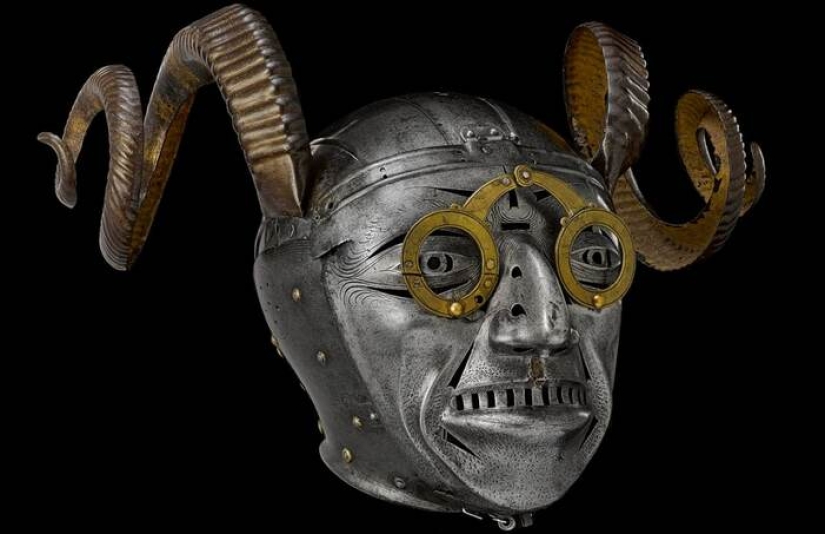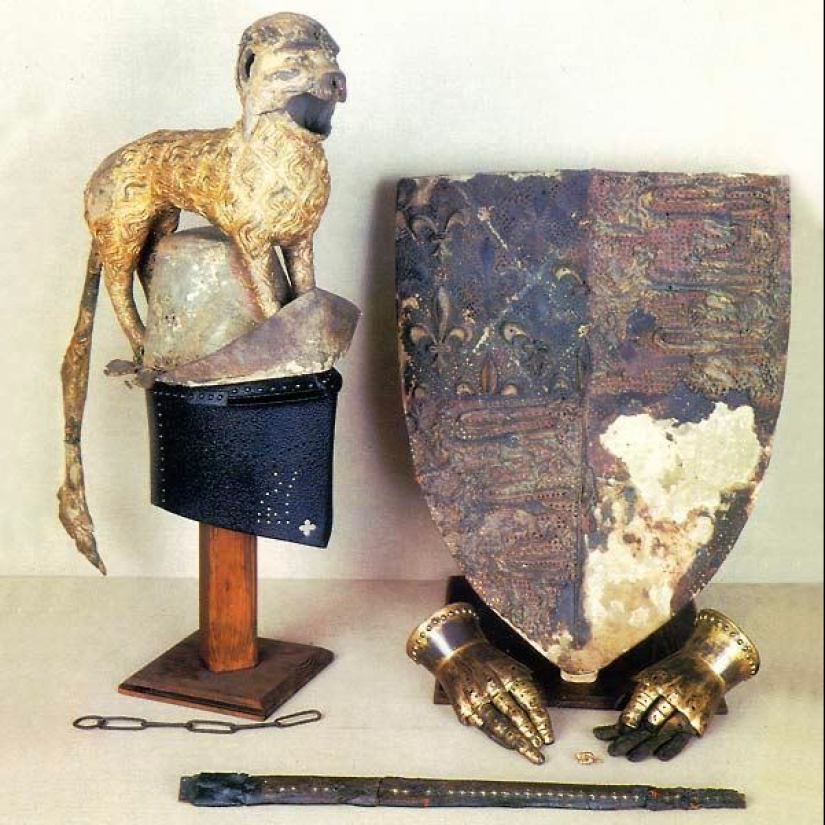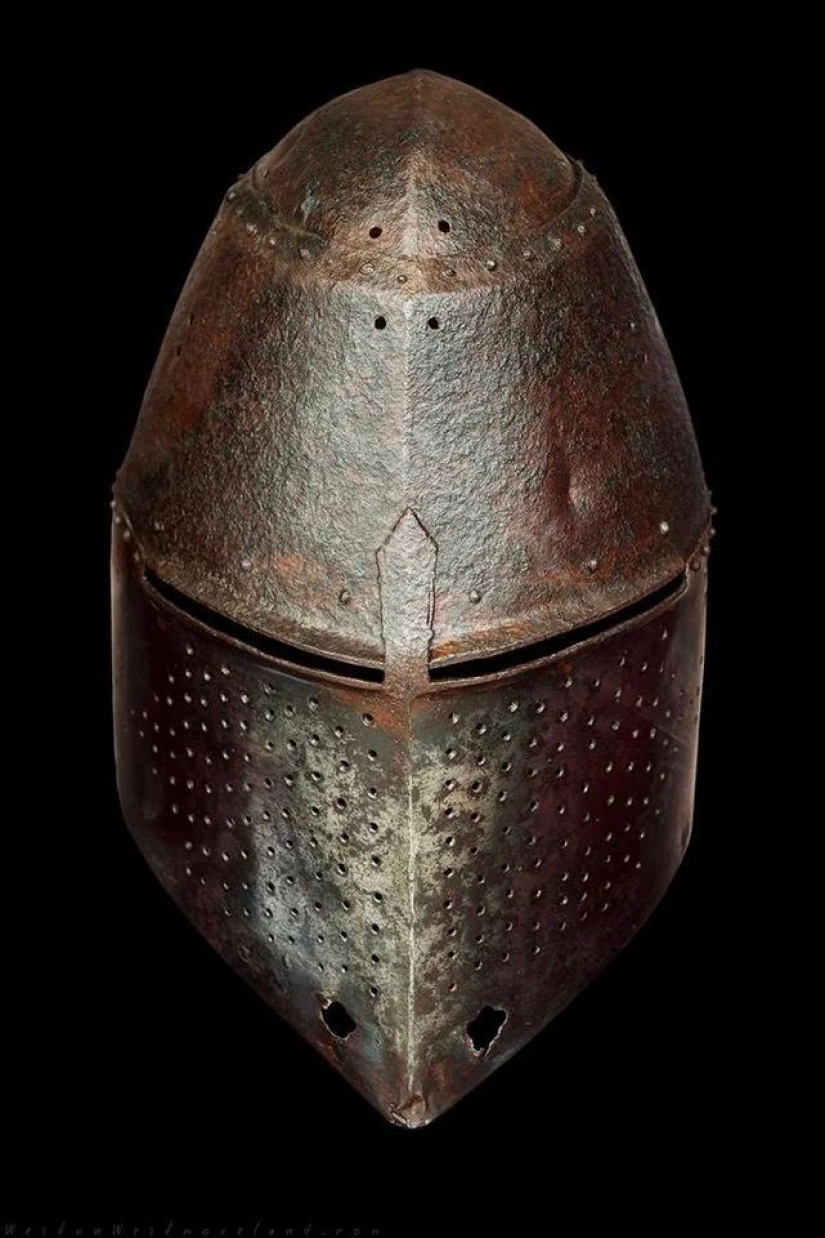Unusual Helmets: 25 Amazing Artifacts from Different Eras
Categories: Design and Architecture | History
By Pictolic https://pictolic.com/article/unusual-helmets-25-amazing-artifacts-from-different-eras.htmlHelmets are more than just protection in battle. They tell us stories about the warriors of the past, the technology of their time, and even the desire for beauty reflected in every line of the pattern or the shape of the crest. In this unique selection, you will find parts of knights' plate armor, intricate decorations of ancient warriors, and even a horse helmet - a rare example of care for combat companions. Prepare to be amazed and delighted by the craftsmanship that was reflected in every detail of these historical artifacts!


Royal ceremonial helmet of Gustav Vasa, King of Sweden, 1540, Augsburg or Nuremberg, Germany.

Helmet from the plate armour of the Crown Prince Henry, the future King Henry II of France, ~1540, Milan, by Francesco Negroli from a dynasty of master armourers.

Sallet of Maximilian I, Holy Roman Emperor, one of the most aesthetic helmets, 1490–1495.

Horse helmet of Henry II, 1490–1500, restored 1539.

A beautifully preserved Phrygian winged helmet, 4th century BC (sold at auction for £160,000).

Horned helmet from the gift set of Emperor Maximilian I for King Henry VIII, 1511–1514, weight 2.89 kg.

Helmets from the Valsgårde Farm burial boats, Sweden, ~550–790, Vendel period, pre-Viking Age.

Helmet with gilded Islamic inscriptions, decorated with feathers inserted into slots on the sides, 17th-18th century, Iran.

A 13th century German topfhelm, probably belonging to a Teutonic knight from the era of the Teutonic Order's expansion into Pomerania, from the German Historical Museum.

Conical helmet with iron mask, 17th century, Japan.

Salad with bevor and falling buff, belonging to Emperor Maximilian I, 1495, Germany.

Helmet (and shield, gauntlets and scabbard) of Edward the Black Prince, 1330–1376, England.

Tournament sallet of Maximilian I, Holy Roman Emperor, forged by master Jörg Helmschmid the Younger, 1497–1502, Vienna. Equipped with removable brow plates that flew apart when struck by a spear. Material: steel, copper alloy.

Damascus steel helmet with gilded arabesques and Koranic inscriptions, forged for the Grand Vizier of Sultan Suleiman the Magnificent, ~1560, presumably Istanbul. Weight: 2.5 kg. Erroneously called "the helmet of one of the Russian tsars".

Helmet of Sir Richard Pambridge, a participant in the Hundred Years' War between England and France, 14th century, England. Topfhelms of this type were used in the battles of Crecy and Poitiers.

Helmet of Yaroslav Vsevolodovich before restoration, 12th–13th centuries. Found in 1808 by peasant women Anisya Larionova and Nastasya Vasilyeva near the Koloksha River, near the village of Lykova, Yuryev-Polsky, Vladimir province.

Helmet of King James II of England, Scotland and Ireland, part of a suit of armour, silvered and gilded, lined with crimson velvet. The cost of the armour was £100, while a normal suit of this type cost about £2. Total weight: 16.85 kg. 1686, England.

A masterpiece of the Renaissance burgonet, created by the great master Filippo Negroli (1510–1579), 1543, Milan. Made from a single sheet of steel, patinated to look like bronze, decorated with reliefs with classical motifs: a siren mermaid, forming a comb, holding Medusa by the hair. Materials: gold, steel. Weight: 1.87 kg.

Kabuto in the form of a crouching rabbit, 17th century, Japan. Materials: iron, silver, gold, leather, silk.

Sallet in the shape of the head of the Nemean lion, whose skin was worn by Hercules, 1475–80, Italy. The outer shell is made of embossed and gilded copper, worn over a simple helmet. Materials: steel, copper, gold, glass, textile. Weight: 3.5 kg.

Eggplant-shaped kabuto helmet, 1671–1699, weight: 1.14 kg. Country: Japan.

Painted "black" sallet, 1490, Germany. "Black" was the name given to cheap mass-produced items without grinding or polishing, often painted to mask flaws. Part of the balaclava and lining strap have been preserved - a rare success for this age. Weight: 2.4 kg.

Golden helmet of Meskalamdug, the ancient king of the Sumerian city of Ur, made from a single sheet of gold, 26th century BC, territory of modern Iraq.

Samurai helmet with a crab, created by the famous Japanese master Myochin Nobuie, 1525, Japan. Materials: iron, leather, lacquer, silk. Kept in the Israel Museum in Jerusalem.
Recent articles

Most of us think that the color of the eggshell does not play any role and it is possible not to pay attention. But it's not and ...

The more we rely on technology, the more potential power hackers gain over us. It doesn't matter if their goal is to help or cause ...

Creating a good portrait is one of the most difficult tasks for any photographer. In order to make a really natural and memorable ...